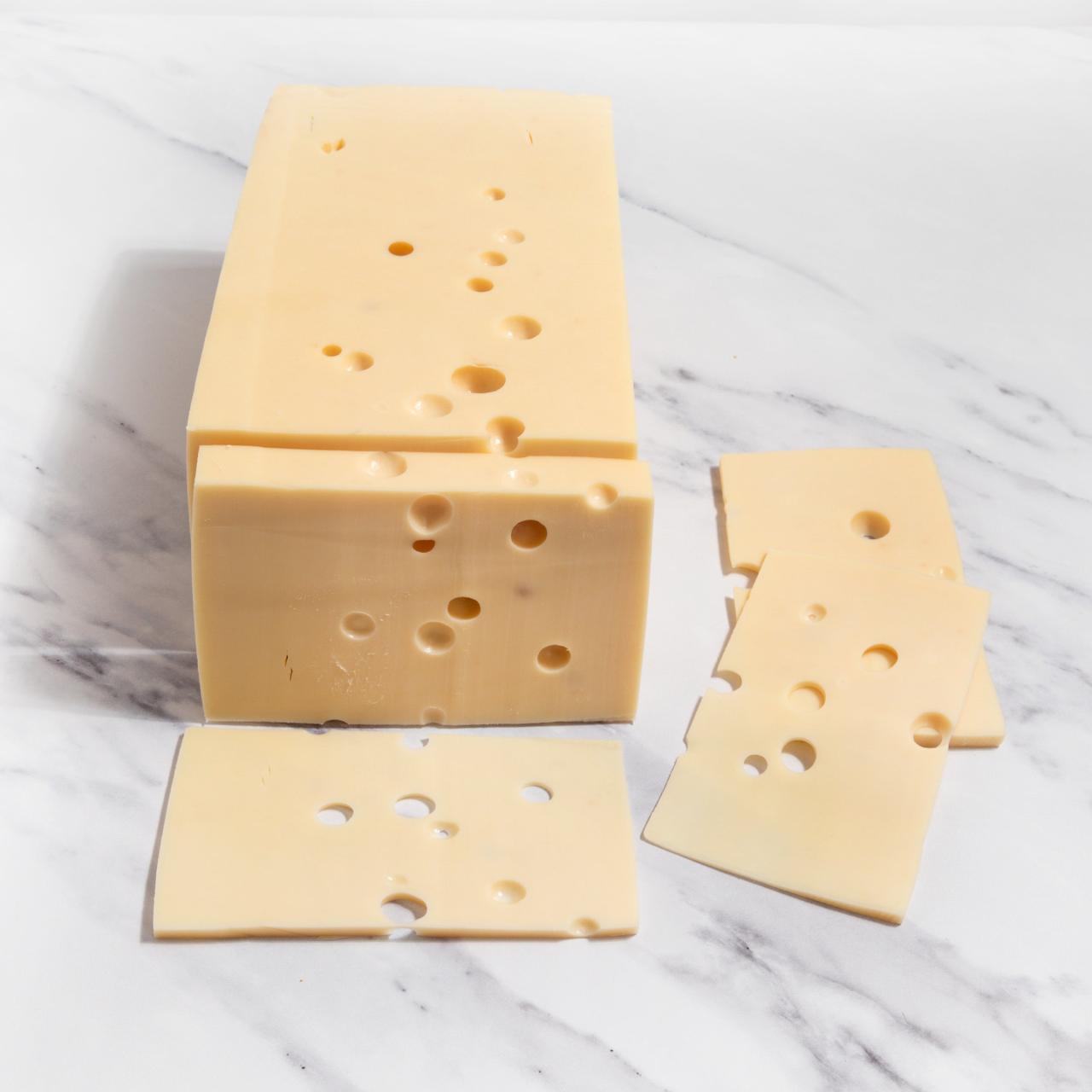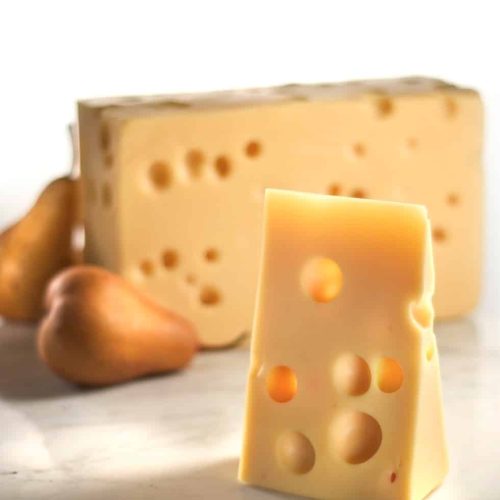In the vast universe of cheeses, Emmental stands out as a star. This Swiss-origin cheese, recognized by its characteristic holes and subtly nutty flavor, has captivated palates across the globe. Our focus today isn’t on the process of making Emmental cheese; instead, we’re diving deep into the nuances of using it in cooking, serving it to perfection, and gaining a deeper understanding of this delightful dairy product. Join us as we explore the culinary wonders of Emmental cheese, a true testament to Swiss craftsmanship in the world of gastronomy.
Emmental Cheese Recipe


Emmental Cheese
Ingredients
- Emmental Cheese
Instructions
- * Serve at room temperature-an excellent table cheese.
- * Accompany with dried fruit or nuts.
- * Use as a melting cheese.
- * Slice into sandwiches, hamburgers and steak sandwiches.
- * Shave into salads.
- * Grate into soups and tarts.
- * Cook one side of a potato rosti, flip, top with grated Emmental and allow to melt while the underside cooks.
Video
Notes
| Emmental
Type: hard Color: Yellow Origin: Switzerland Taste: Salty, with Holes Use: dessert, toast Recommendation: maximum humidity 41-46% Also: Prepare after ripening |
Cooking Tips for Emmental Cheese

Cooking with Emmental cheese can elevate your dishes to new heights. Here are some tips to help you make the most of this Swiss marvel:
- Melting Point: Emmental has a high melting point, making it perfect for gratins, fondues, and other baked dishes. However, avoid overheating as it can cause the cheese to become rubbery.
- Pairing Flavors: Emmental’s mild, slightly nutty flavor pairs well with fruits like apples and pears. It also complements cured meats and robust wines.
- Storage: Store Emmental cheese in the refrigerator, wrapped in wax paper or a cheese bag to maintain its freshness and prevent it from drying out.
- Grating: For best results, grate Emmental cheese just before using it in your recipes. This ensures maximum flavor and prevents the cheese from drying out.
Serving Emmental Cheese

Serving Emmental cheese correctly can enhance its flavor and your overall dining experience. Here are some suggestions:
- Temperature: Serve Emmental at room temperature to allow its flavors to fully develop.
- Cheese Board: On a cheese board, pair Emmental with grapes, nuts, and a variety of bread. Its mild flavor makes it a versatile addition to any cheese selection.
- Wine Pairing: Emmental pairs beautifully with a variety of wines. Try it with a full-bodied red like Merlot or a crisp white like Chardonnay.
FAQs about Emmental Cheese

- What is the origin of Emmental cheese? Emmental originated in the Emme valley in the Swiss canton of Bern, hence its name.
- Why does Emmental cheese have holes? The holes are formed by gas bubbles released by bacteria during the fermentation process.
- Is Emmental cheese lactose-free? Most aged cheeses, including Emmental, contain very little lactose and are generally well-tolerated by people with lactose intolerance.
- Can I eat the rind of Emmental cheese? While the rind of Emmental is not harmful, it is usually not eaten due to its hard texture.
- How long can Emmental cheese be stored? If stored properly, Emmental cheese can last for several weeks in the refrigerator.
Emmental cheese, with its unique characteristics and versatile nature, offers a world of culinary possibilities. Whether you’re melting it into a fondue, grating it over a gratin, or simply enjoying it on a cheese board, Emmental promises a delightful experience. As we conclude our journey into the world of Emmental, remember that the joy of food lies not just in eating, but also in understanding and appreciating the nuances of ingredients. So, the next time you savor a piece of Emmental, take a moment to appreciate its rich heritage and the artistry that goes into its creation.





